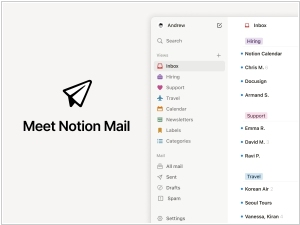Basecamp vs Wrike
March 09, 2025 | Author: Adam Levine
11★
Basecamp tackles project management with a focus on communication and collaboration. Making to-do lists and adding to-do items literally just takes seconds. Basecamp is optimized to make the things you do most often really fast and really easy. Basecamp mobile is especially made for popular mobile devices like iPhone and Android.
16★
Juggling multiple projects? Wrike makes it easy and efficient for you. It lets you easily adjust plans on the Gantt chart, optimize schedules in the workload view, create custom reports, track time and much more — all with a few mouse clicks.
Basecamp and Wrike are both project management tools, which is a fancy way of saying they help people organize things they were probably going to forget about anyway. They let teams share files, assign tasks and send messages, all while pretending they’re being more productive than they actually are. Both live in the cloud, which doesn’t mean they float majestically above our heads, but rather that they exist in distant, humming server rooms filled with blinking lights and the faint whiff of existential dread. Oh and they both integrate with Slack, so you can be distracted in yet another way.
Basecamp has been around since 1999, which in software years is roughly the time it takes for a civilization to rise and collapse. It was built in the USA for small businesses and remote teams who just want a simple way to keep track of things without getting a headache. It charges a flat fee instead of making you count users like some kind of cruel head tax and it avoids complex features like advanced workflow automation because, frankly, who needs more things to automate badly? Instead, it focuses on being friendly, approachable and about as intimidating as a Labrador with a to-do list.
Wrike, on the other hand, was born in 2006, which makes it younger, slightly more ambitious and a little less forgiving. It also hails from the USA, but it has its sights set on enterprises, marketing teams and other people who enjoy dashboards with more widgets than a spaceship’s control panel. Unlike Basecamp, Wrike loves automation, reporting and pricing that charges per user, which means the more people you have, the more money you lose—sorry, spend wisely. It even has Gantt charts, which is a delight if you like staring at colorful bars that promise organization but ultimately lead to mild panic.
See also: Top 10 Project Management software
Basecamp has been around since 1999, which in software years is roughly the time it takes for a civilization to rise and collapse. It was built in the USA for small businesses and remote teams who just want a simple way to keep track of things without getting a headache. It charges a flat fee instead of making you count users like some kind of cruel head tax and it avoids complex features like advanced workflow automation because, frankly, who needs more things to automate badly? Instead, it focuses on being friendly, approachable and about as intimidating as a Labrador with a to-do list.
Wrike, on the other hand, was born in 2006, which makes it younger, slightly more ambitious and a little less forgiving. It also hails from the USA, but it has its sights set on enterprises, marketing teams and other people who enjoy dashboards with more widgets than a spaceship’s control panel. Unlike Basecamp, Wrike loves automation, reporting and pricing that charges per user, which means the more people you have, the more money you lose—sorry, spend wisely. It even has Gantt charts, which is a delight if you like staring at colorful bars that promise organization but ultimately lead to mild panic.
See also: Top 10 Project Management software





